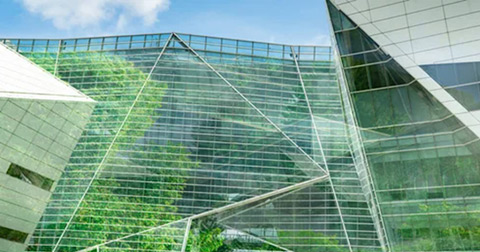Twin Transition: How Emerging Technologies Are Reshaping Buildings and Cities for a Sustainable Future
The concept of the “twin transition” – digital and energy – has become the cornerstone of global strategies for a more sustainable and efficient future. In buildings and cities, these two driving forces converge, fostering technological innovations that promise to revolutionize the way we live and interact with the urban environment. It’s no longer just about reducing environmental impact, but about creating resilient, intelligent, and adaptive urban ecosystems.
Digitalization is the connective tissue enabling the transformation of buildings and cities. At its core lie several key technologies:
-
Internet of Things (IoT): Sensors, devices, and smart actuators form the backbone of connected buildings and urban infrastructure. From smart lamps that adjust light intensity based on occupancy, to sensors monitoring air quality or waste bin fill levels, IoT gathers crucial real-time data.
-
Artificial Intelligence (AI) and Big Data: The vast amount of data generated by IoT would be meaningless without the ability to analyze it. AI and machine learning algorithms extract value from this data, identifying patterns, predicting consumption, optimizing flows, and even anticipating faults or inefficiencies. AI-based Building Energy Management Systems (BEMS) can autonomously regulate heating, ventilation, and air conditioning (HVAC) to maximize comfort while minimizing energy use.
-
Digital Twin: Digital twins are virtual replicas of buildings or entire urban areas. They allow for the simulation of complex scenarios, testing of solutions before physical implementation, and real-time performance monitoring. This tool is essential for predictive design, maintenance management, and large-scale energy efficiency optimization.
-
Advanced Connectivity (5G and Beyond): 5G isn’t just about speed – it’s about low latency and the capacity to handle an extremely high number of simultaneous connections. This infrastructure is crucial for instant communication between IoT devices, autonomous vehicles, and critical infrastructure, enabling advanced urban services and ensuring the seamless flow of essential data for smart city management.
Innovations Supporting the Energy Transition
Alongside digitalization, the energy transition is driving the emergence of innovative solutions to reduce fossil fuel dependence and enhance efficiency:
-
Integrated Renewable Energy: Photovoltaic and thermal solar panels, geothermal systems, and small-scale wind turbines are increasingly being incorporated into building designs, turning them into “prosumers” – both producers and consumers of energy.
-
Smart Grid: No longer a one-way system, the smart grid enables a two-way flow of energy and information. Smart grids optimize distribution, manage peak demand, efficiently integrate renewable sources, and empower consumers to participate actively in the energy market.
-
Energy Storage Systems: High-capacity batteries, often integrated into buildings or neighborhoods, allow excess energy from renewables to be stored and used during peak demand times or when sources are inactive (e.g., at night for solar).
-
Innovative Building Materials: From photovoltaic façades to solar-control glazing, from next-generation insulation to green and blue roofs for thermal and water management, construction is moving toward solutions that enhance buildings’ passive efficiency.
-
Demand-Side Management: Smart systems optimize energy usage based on availability and cost, shifting consumption to off-peak hours or when renewable energy is more abundant.




